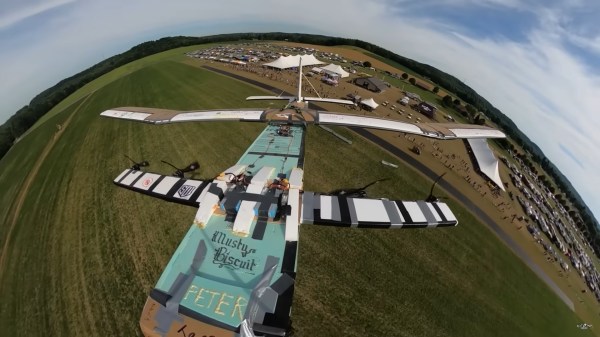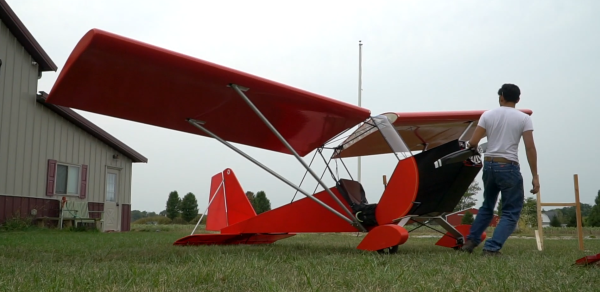History is full of engineers making (or attempting to make) things out of the wrong stuff, from massive wooden aircraft to boats made of ice and sawdust. [PeterSripol] is attempting to make an ultralight aircraft out of a rather wrong material: cardboard. In the previous installment of the project, a pair of wings was fabricated. In this installment, the wings find their home on an equally mostly cardboard fuselage, complete with rudder and elevator.
The fuselage construction amounts to little more than a cardboard box in the shape of an RC airplane. Doublers provide additional strength in critical areas, and fillets provide a modicum of additional strength around seams. To support the weight of the pilot, a piece of corrugated cardboard is corrugated again, with an additional piece making up the floor. With the addition of a couple of side windows for comfort and visibility, the fuselage is completed, but additional components need to be added.


















